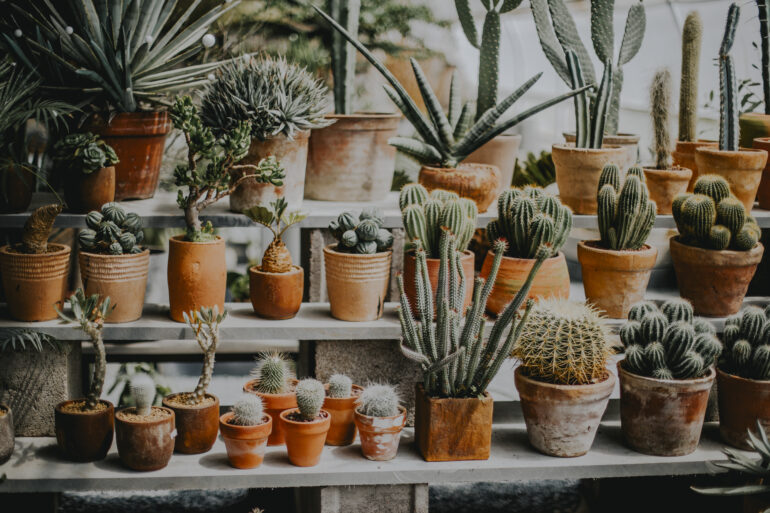Choosing the right nursery containers for your plants is a crucial step in ensuring their health and growth. Whether you’ve been gardening for a long time or this is your first time, knowing the right nursery container sizes can make a big difference in how well your plants do. This guide is meant to take the mystery out of nursery container sizes by explaining the things that affect your choice and helping you find the best size for your growing needs.
Understanding Nursery Container Sizes
There are different kinds of nursery pots and containers that are used for different things based on the type of plant and its stage of growth. The sizing conventions can vary slightly between manufacturers, but they generally follow standard guidelines based on volume or dimensions. Common sizes include:
Seedling Trays And Cell Packs: These are used for starting seeds and early seedling growth. They typically come in various configurations, such as 6-cell, 12-cell, or 24-cell packs, each cell holding a single plant.
Small Nursery Pots (1-3 Gallons): Ideal for young plants or smaller species that are still establishing their root systems.
Medium Nursery Pots (5-10 Gallons): Suitable for medium-sized plants and shrubs that have outgrown smaller containers but are not yet ready for larger pots.
Large Nursery Pots (15+ Gallons): Reserved for mature plants, trees, and shrubs that require ample root space and stability.
Factors Influencing Container Choice
When selecting nursery containers, several factors should influence your decision:
Plant Type And Size: Consider the mature size of your plant and its root system. Larger plants need more space for roots to grow and establish.
Root Structure: Some plants have deep taproots, while others have shallower, spreading root systems. Choose containers that accommodate the specific root structure of your plants.
Growing Environment: If you’re gardening in a region with harsh winters or extreme temperatures, larger containers can provide better insulation and stability for plants.
Watering And Drainage Needs: Container size affects watering frequency and drainage. Smaller pots dry out faster, while larger pots retain moisture longer.
Choosing The Right Size
For Seed Starting And Propagation: Seedling trays and small cell packs are ideal for starting seeds. They provide individual compartments for each seedling, promoting root development before transplanting into larger pots.
For Young Plants: When transitioning seedlings to larger containers, choose pots that are 1-3 gallons in size. This allows young plants to continue developing their roots without being overwhelmed by excess space.
For Medium-Sized Plants: Plants that have outgrown their initial pots but are not yet mature can thrive in medium-sized containers (5-10 gallons). These pots provide sufficient room for root expansion and stability.
For Mature Plants And Trees: Trees and plants that are bigger need a lot of room for their roots to spread out. Choose pots that are at least 15 gallons to give the plants enough room to grow and thrive.
Benefits Of Choosing The Right Size
Selecting the correct nursery container size offers several benefits:
Healthy Root Development: Properly sized containers encourage healthy root growth, reducing the risk of root-bound plants.
Optimal Nutrient Uptake: Adequate space allows plants to access nutrients more efficiently, promoting overall growth and vitality.
Reduced Transplant Shock: Matching container size to plant size minimizes transplant shock, enhancing plant resilience during transplantation.
Improved Aesthetic And Functionality: Well-chosen containers enhance the visual appeal of your garden or landscape while providing practical benefits like stability and ease of maintenance.
Practical Tips For Container Gardening
To maximize the benefits of nursery containers:
Ensure Adequate Drainage: If you need to, drill ventilation holes to keep the soil from getting too wet, which can cause root rot.
Monitor Watering Cycles: Adjust watering frequency based on container size and plant needs. Larger pots retain moisture longer, requiring less frequent watering compared to smaller pots.
Use Quality Potting Mix: Choose a well-draining potting mix tailored to your plant’s needs to provide essential nutrients and support healthy root growth.
Conclusion
Navigating the world of nursery container sizes doesn’t have to be daunting. By understanding the needs of your plants, considering their growth stage, and selecting containers that accommodate their root systems, you can create an environment where your plants thrive. Whether you’re starting seeds, nurturing young plants, or maintaining mature specimens, choosing the perfect nursery container size sets the foundation for a successful gardening experience.

